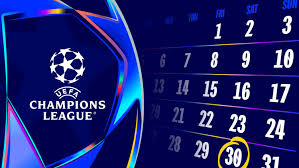Europe’s premium tournament arrives with a reshaped spine: a single table instead of old mini-groups, more headline matchups, and a playoff gate before the last-16. Buzzwords float around the draw bowls, but the real question bites harder: who actually benefits, and who ends up paying the toll?
Chance still matters. Seeding pots, home/away balance, and cold autumn travel can swing momentum; the early calendar can feel like probability in motion, a little like mines game earning — patterns, risk, and a reveal that sometimes flatters an underdog or exposes a heavyweight’s soft spot.
How the new League Phase actually works
The league phase gathers 36 clubs into one table. Each club plays eight different opponents, four at home and four away. No return fixtures against the same side, no comfort of a mini-league familiar loop. After those eight matches, the top eight jump straight into the round of 16; places 9–24 enter two-legged playoffs, and the rest exit early. The stated aim is simple: more marquee ties without abandoning competitive balance.
Seeding still shapes destiny. Pots sort entrants by UEFA coefficient; software pairs opponents with guardrails to prevent domestic clashes and to distribute difficulty. In practice, a contender can draw two fellow heavyweights and still land favorable mid-table duels elsewhere. A mid-ranked club can receive a glamorous calendar and a brutal one in the same breath — two home roars, two away reality checks.
Who Gains the Most (and Why)
- Big-squad bluebloods — depth soaks up fixture load; rotation keeps intensity high across eight distinct styles.
- Metrics-driven clubs — scouting that targets “style edges” wins points on short preparation; set-piece labs and rest-defense craft travel well.
- Press-and-punish machines — high turnovers translate against varied opposition; eight bites mean more chances to bank three-point sprints.
- Goal-difference maximizers — single meetings reward ruthless finishing; a flat afternoon from a rival cannot be “repaired” in a return leg.
- Matchday operators — organizations with slick logistics, quick recovery protocols, and calm travel routines harvest marginal gains weekly.
A broader table also rewrites psychology. Old groups often died by Matchday 4; the new map keeps stakes alive longer. One good week can jump five places; one bad double-header can invite the playoff gauntlet. Broadcast value rises, too — more cross-pot meetings, fewer dead rubbers, and a clearer path for star narratives to breathe beyond domestic calendars. The playing field is not egalitarian; it is transparent.
Rhythm, Recovery, and Reality Checks
Eight opponents in one phase demand tactical plasticity. Compact mid-blocks one week, wide overloads the next, then counters against a high line three days later. Training cycles pivot from “learn the rival” to “refresh the identity.” Subprinciples carry the load: rest defense to survive transitions, set-piece rehearsal for low-margin nights, and game-state control when travel fatigue enters the chat. Calendar design spreads those nights over designated European weeks, which helps recovery without fully neutralizing congestion. p1travel.com
January pressure gains a new flavor. The playoff zone (9–24) turns the mid-table into a battle for seeding, not survival alone. Finishing eighth avoids two extra knockout matches; finishing ninth accepts that toll. Club strategy departments will track not only points per game but also “playoff avoidance value” — a proxy for fatigue saved in spring.
Who May Lose Out (and How)
- Thin-bench risers — one injury cluster across a busy month can erase early momentum; depth wins this calendar.
- Reactive-only sides — pure low blocks with limited counter craft risk narrow defeats against varied top-half styles.
- Clubs living off home magic — only four league-phase nights in front of local stands; travel consistency becomes non-negotiable.
- Slow starters — no return leg to fix a misread game plan; early tactical misses turn into season-long math problems.
- Roster gamblers — squads banking on a January window rescue may meet the playoff wall before reinforcements land.
Who the phase truly serves
From a system view, the league phase serves scale. Big rosters, broad coaching staffs, and mature sports-science pipelines receive a larger runway to express advantages. Upsets still sting — a chaotic away night will never disappear from this competition’s DNA — but variance narrows when eight unique opponents replace six group fixtures with repeats. That narrowing favors superclubs and smart climbers with stable recruitment models.
For neutrals, the payoff is obvious: more “must-watch” pairings, fewer sleepy winter strolls, cleaner stakes. For challengers, the task sharpens: bank points against stylistic neighbors, attack set pieces like a specialty company, and treat every fixture as a one-off cup tie with league math behind it. The prize remains the same, but the path asks for sturdier feet.
In short, the 2025/26 league phase tilts the board toward organizations built for constant adaptation and high-quality depth, while still leaving oxygen for brave, well-coached projects to punch up. The calendar promises drama; the structure rewards discipline. In a tournament that worships moments, the new shape quietly insists on habits.

